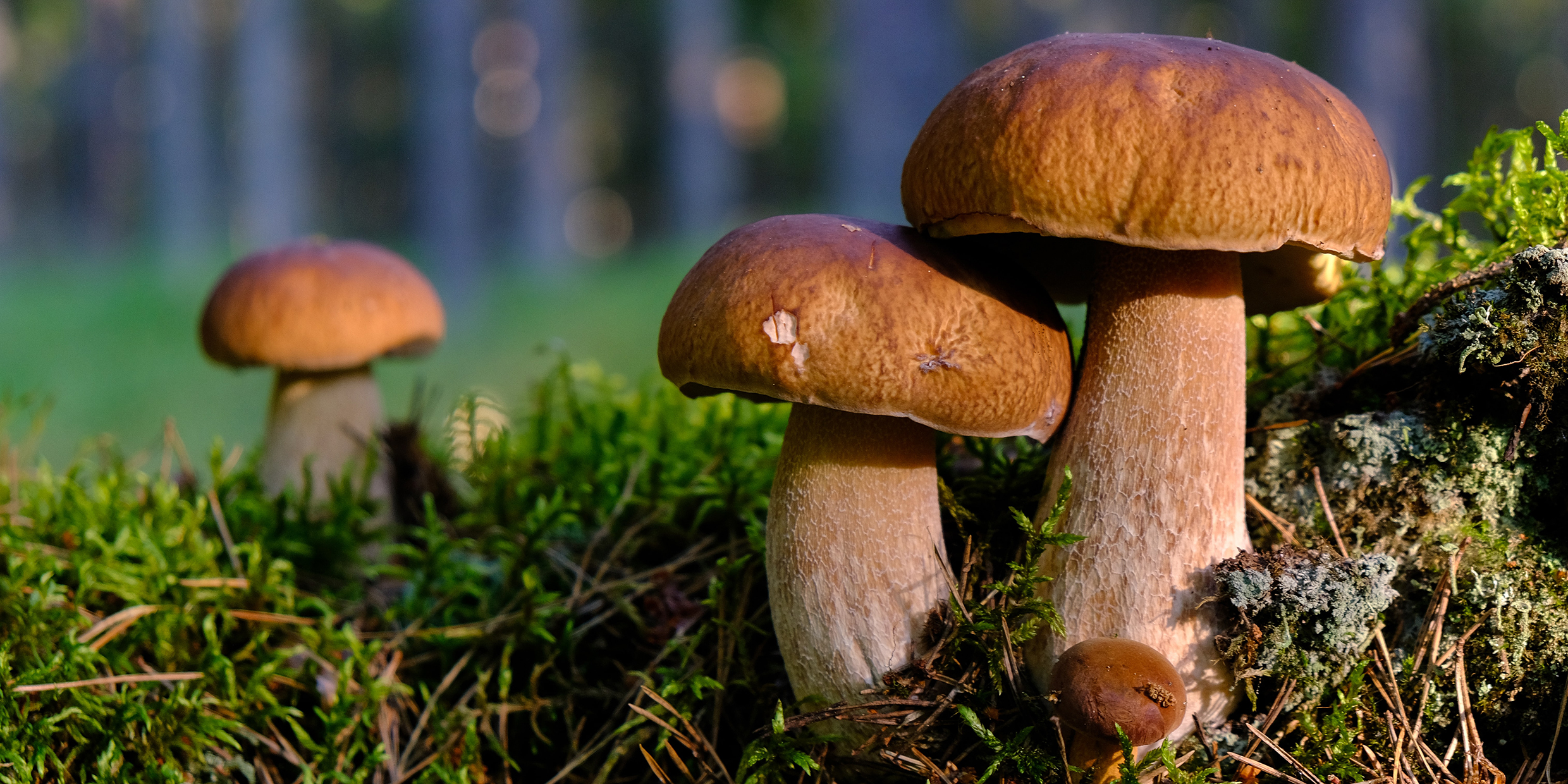Originally published 28 October 1996
A fabulous autumn for mushrooms. More mushrooms than I can ever remember, particularly impressive after last year’s drought. In the woods, the meadows, the garden paths. A Halloween bounty of fungal spooks, eating the detritus of summer.
A cool wet summer prepared the earth. Autumn rains teased them out of the ground. Ghosts, wraiths, imps, and specters: They appear at night, as if evoked by incantations, then fade in the sun. Goblin market. Nature’s ghouls.
On decaying wood chips at the side of a path, a cluster of — what? They look like small starfish. Three or four bumpy arms uplifted, tips touching. Pink and coral.
Are they alive? I pick one from the chips. Place it in the palm of my hand. It looks alive. The texture of living flesh. But the stench! A stench of death.
It is a mushroom, of course, unlike any I have seen before. A mushroom of the stinkhorn family. The cadaverous odor attracts flies that come to feed on the sticky spores that mass along the “starfish” arms. Flies become covered with spores and spread the fungus far and wide. A handbook reveals the name: Stinky Squid. Perfect! Turn it upside down and the arms dangle from a bulbous body, squid-like.
Late October. Green fades. Chlorophyll closes down. This is the season of the Grim Reaper. Mushrooms skulk the forest floor like damned spirits. Costumed for trick or treat. The spectral garb of Pandemonium.
Another mushroom I haven’t seen in our woods before, in Draculian clusters by the path. Funereal purple. Shaped like trumpets. Horns of Plenty they are called in the handbook. The French more appropriately call them “Trumpets of the Dead.”
Why do so many species of mushrooms have Halloween names? Destroying Angel. Fairy Helmets. Jack‑o’-Lanterns. Death Cap. Witch’s Butter. The names betray our feelings. We don’t trust mushrooms. Something deep in our folk consciousness turns away in revulsion.
Is it that some of them are poisonous? Hallucinogenic? Or is it something deeper? Druidical? Are we reminded of the fairy spirits of our forest-living European ancestors? Is this what Shakespeare’s Prospero had in mind when he addressed the elves “whose pastime is to make midnight mushrooms”?
Fungi are heterotrophs, which means they require for their nourishment organic compounds synthesized by other organisms, namely green plants. Some fungi are parasites; they take nutrients from a living host. Most fungi are saprobes; they obtain nutrients from non-living organic matter and cause its decay.
What we familiarly know as mushrooms are the short-lived fruiting bodies of a fungus, like apples on a tree. The living organism, called the mycelium, is a web of branching fibers hidden within decaying matter, threads so fine as to be individually almost invisible, but cobwebby white when seen en masse.
The mycelium secretes digestive enzymes, which break down organic matter, then absorbs the products. Because the digestive reaction takes place outside the fungal cells, living plants can also benefit from the released nutrients. The reaction generates carbon dioxide, also of use to plants.
It has been said that the world would be a heap of old rubbish if it were not for the mushrooms and their ability to get rid of it. That’s not quite true. Heterotrophic bacteria do their part in ridding us of the refuse of death. But it is true enough that mushrooms play an indispensable role in recycling the materials of life, in balancing the great chemical equations of earth and atmosphere.
Mushrooms are the grave robbers of the plant world, shunners of sunlight, and it is appropriate that they come out in autumn’s failing light to skulk with goblins, witches, incubi, and succubi, dancing in fairy circles. There is something darkly sexual about the mushrooms. The phallic stinkhorn. The vulval earthstar. And those wicked little men of the woods, which I have never seen except in foreign handbooks, the Crowned Earthstars, Geastrum fornicatum, marching in lascivious gangs, with open mouths.
Our ancestors roaming the dark forests of Northern Europe may have seen the mushrooms as spirits of the dead in macabre resurrection. Appearing overnight, in garish colors, these Lords of the Flies evoked, somehow, mysteriously, thoughts of malevolence and lust. We have inherited from that time a poetry of names that invest mushrooms with an aspect of evil rivaled only by that which we associate with snakes.
Mushrooms are more to us than nature’s recyclers; they are bearers of myth and magic, icons of mortality. And they are real, too, fascinating in their curious forms, in their colorful comings and goings. “Here is beauty from decay,” wrote the naturalist Edwin Way Teale, “a frail and insubstantial form of life, a kind of botanical ectoplasm.”
This year the mushrooms have been bigger, more colorful, more numerous, and more varied, excited into a witch’s sabbath by frequent rain. And this is their week, their final fling — night-stalking tricksters and treaters, ectoplasmic Halloween spooks.



